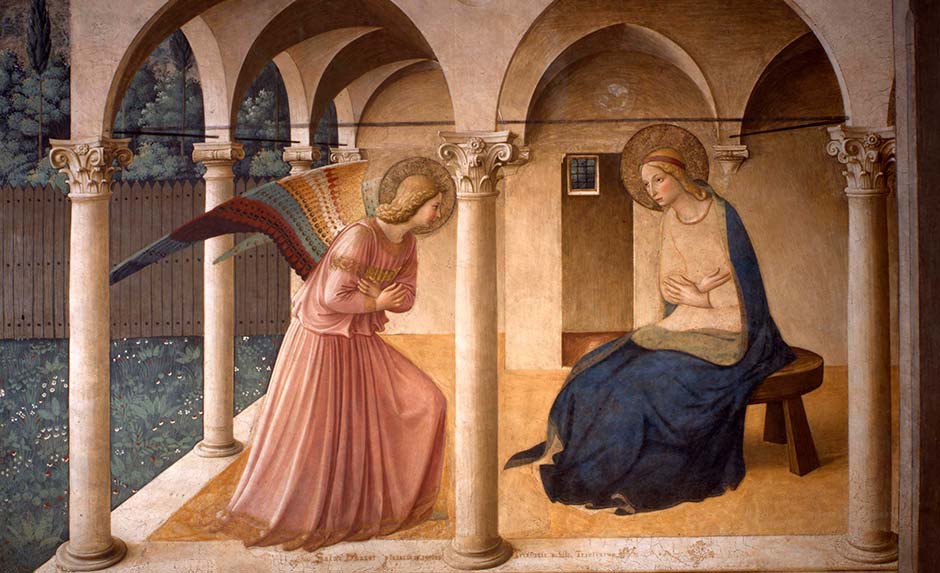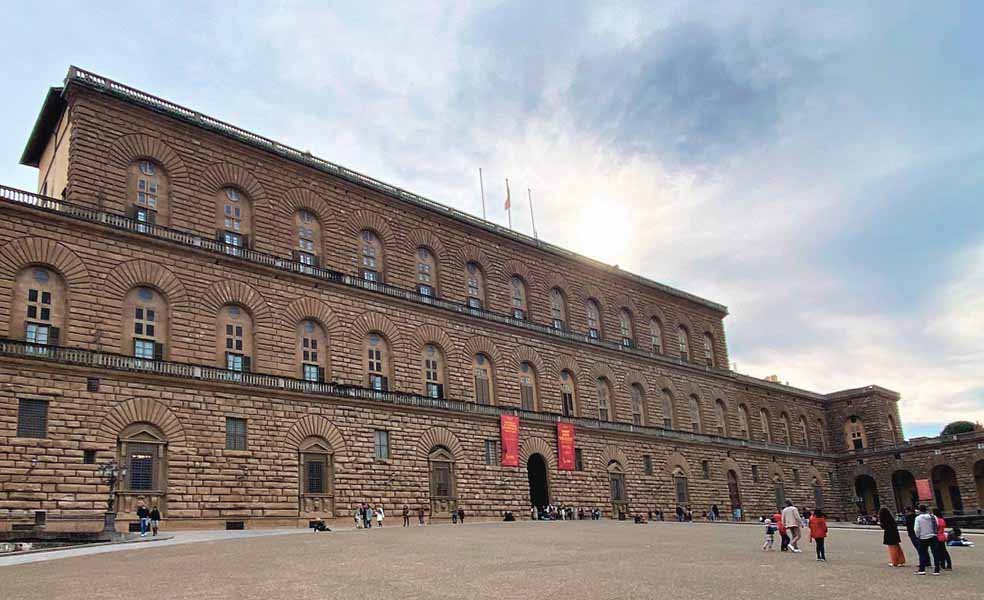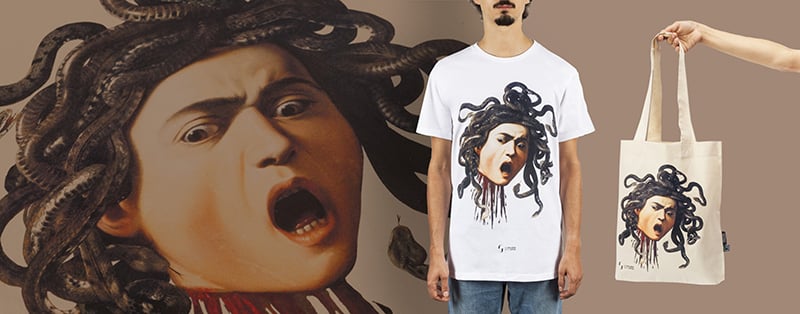Home / Experience / Beato Angelico
Beato Angelico
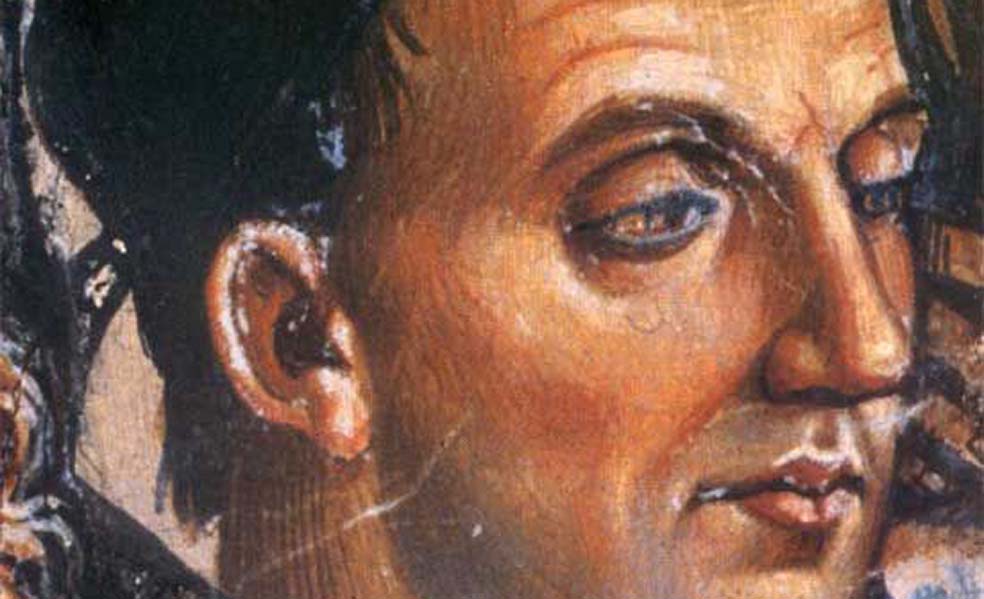
From lay painter to religious painter
He was born in Mugello, near Vicchio, around 1395. His real name was Guido di Pietro although he was also known among his contemporaries as Giovanni da Fiesole, a name he assumed once he donned the Dominican habit.
Thanks to archive documents attesting to the payments he received, we know he worked in Florence as a miniaturist and painter throughout the years 1417–1418, even prior to becoming a monk. These works may attest that Angelico trained in the workshop of Ambrogio di Baldese, a Florentine painter of the late Gothic period who had a number of open workshops throughout the city. Historians believe he was not allowed to paint during his first year of apprenticeship, and considering that his first work signed ‘Frate Giovanni de’ Frati di San Domenico di Fiesole’ is dated 1423, he most likely became a Dominican sometime between 1418 and 1421.
Scenes from the Lives of the Desert Fathers (Thebaid, c. 1418–1420), now in the Uffizi Gallery, is allocated to his early artistic activity. After its initial attribution to Gherardo Starnina, due to the late Gothic characteristics of the work, historian Roberto Longhi was the first to attribute it to Beato Angelico, identifying the correct use of the perspective of the buildings as a sign of the hand of Angelico, who was already applying fifteenth-century elements to his works. The painting depicts the life of asceticism and prayer of the monks, isolated in the midst of a rocky landscape representative of the lives of the Holy Fathers in the desert of Thebes.
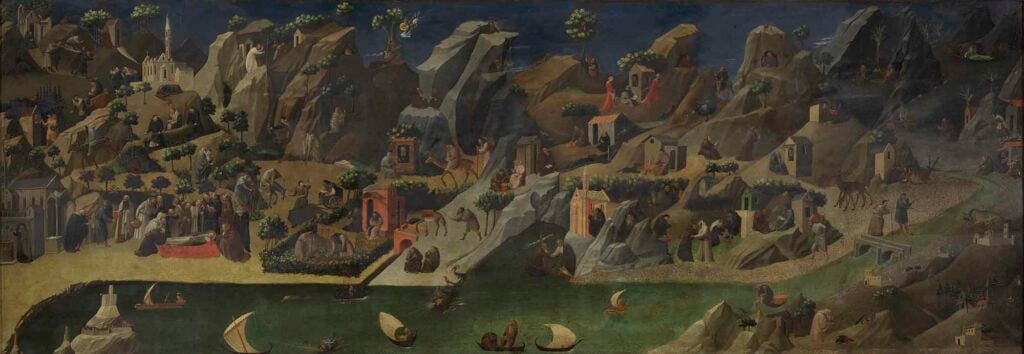
A very particular work, the panel arouses curiosity in viewers who, thanks to the absence of a precise focal point, may observe the lively microcosm of monastic activities in minute detail, while the simple and realistic setting nevertheless seems to be enveloped in a fairy-tale atmosphere. In 2019, the Uffizi Gallery placed the work at a height of 65 centimetres: a choice that allows children to ‘read’ and appreciate the work and become curious about its many characters and their actions.
Activities in the Monastery of San Domenico in Fiesole
During the central years of his activity, Beato Angelico devoted himself mainly to the production of works for the Monastery of San Domenico in Fiesole, where he also lived. Among these works is the so-called Fiesole Altarpiece (1424–1425), later remodelled by Lorenzo di Credi (1459–1537) in 1501. The work has a highly original composition: it is the first time the figures are depicted on the same plane without being separated by screens or other devices, but only through the creation of a concrete and real space.
Although he held very prominent roles in the Dominican community, Beato Angelico did not abandon his activity as a painter and miniaturist for the rest of his life, and was also very attentive to contemporary artistic production in the city. In the Triptych of St Peter the Martyr, in fact, painted for the Convent of the Observant Dominican nuns of San Pietro Martire in Florence (1428–1429), the artist shows he was aware of the artistic innovations of Gentile da Fabriano (1370–1427) and Masaccio (1401–1428): of the former he embraces the fascination for ornamentation and precious details (typical characteristics of late-Gothic art), while from the latter his interest in a new conception of space: realistic and true to perspective.
The notoriety acquired with these works soon led other religious institutions to commission replicas and variants from him. This is the case of the series of panels dedicated to the Annunciation: among the various paintings, the most appreciated today are those originally destined for San Domenico in Fiesole (1435), but now found in the Prado Museum in Madrid; the one in the Museo Diocesano in Cortona (1430) and the one in San Giovanni Valdarno (in the Museum of the Basilica of Santa Maria delle Grazie, 1432). The Prado work reveals both the persisting influence of the late Gothic style – in the rich description of the plant elements of the Garden of Eden – but also the approach to Renaissance novelties, in the spatial construction of the loggia that houses the Virgin and the Archangel Gabriel.
In the early 1430s, he produced his majestic Last Judgement (1431–1433), now in the Museo Nazionale di San Marco. The panel is over two metres wide and one metre high, and was intended to decorate the cymatium of a seat in the choir. The work comes from the now suppressed convent of Santa Maria degli Angeli, and historians have also identified the hands of less refined painters than the master, suggesting Beato Angelico was simultaneously engaged in other commissions, such as perhaps the Annunciation in Cortona.
The Deposition (1434), painted for the Florentine banker Palla Strozzi and destined for the sacristy of the church of Santa Trinita, also in Florence, dates back to the same period. Now in the Museo Nazionale di San Marco, this beautiful panel reconstructs the sorrowful scene of the deposition of Christ’s body with moving refinement, articulated in a complex structure and vivid colours.
Among his masterpieces is the Coronation of the Virgin (1432), now on display in the Uffizi and unfortunately dismembered (the predellae of the panel depicting the marriage and entombment of the Virgin are now in the Museo di San Marco). Here Beato Angelico draws fully on the preciousness of late-Gothic style, placing the entire scene against a sublime gold background. The figures float harmoniously above the clouds forming a circle around Christ, represented in the act of crowning the Virgin Mary.
The activity at San Marco
In 1438, the Dominican community moved from San Domenico di Fiesole to the convent of San Marco in Florence, which had just been renovated by Michelozzo, commissioned by Cosimo il Vecchio. Angelico was commissioned to decorate the walls: an intervention that extended to all the public and private areas of the monastery: from the church to the cloister, from the refectory to the chapter house, from the corridors to the individual cells.
Famous is the Annunciation in the northern corridor of the monastery: more than three metres wide and over two metres high. Similar in layout to the other Annunciations already painted, this scene is also placed in a courtyard, under a portico overlooking the garden – an allusion to Mary’s virginity – in a simple and essential setting, with no frills, so that all attention is focused on the event. Innovative, however, is the position of the characters: no longer in the centre but placed slightly to the left, so as to give space to the movement of the archangel Gabriel and the divine words communicated to the Virgin.
The vastness of the rooms decorated with frescoes and panels make the Monastery of St Mark unique in terms of its decorative and pictorial extension; never before had such magnificence been envisaged for a monasterial building. All of the decorations in the cells depict episodes from the New Testament or the Crucifixion, as well as the figure of St Dominic showing the observer – in this case the Dominican friars – the example to follow: meditating on religious principles and values as well as the virtuous behaviour to be undertaken.
This large-scale intervention demonstrates Angelico’s great skill as a narrator but also as a moral preacher. His figures are well defined, recognisable; the scenes are depicted rigorously and are easy to interpret. By eliminating all decorative distractions, his message gets through directly and effectively.
Time spent in Rome, Orvieto and the rest of Tuscany
Historians believe that Pope Eugene IV – after staying in Florence for almost ten years and most likely appreciating the artist’s work – summoned him to Rome in 1445. Apparently, among the Pope’s proposals was an offer to become archbishop of Florence, confirming the esteem Beato enjoyed, a role that the artist would however humbly decline.
Beato remained in Rome until 1449 and stayed in the convent of Santa Maria sopra Minerva, where he frescoed the now-destroyed Chapel of the Sacrament.
Together with his assistants including Benozzo Gozzoli (1420–1497) he frescoed the Niccolina Chapel of the Apostolic Palace in the Vatican (1447–1448) for Pope Nicholas V. The frescoes depict the Stories of Saint Stephen, of Saint Lawrence and, in the vaults, the eight Fathers of the Church, occupying three entire walls of the chapel. Here, with great skill, Fra Angelico used architectural elements to set the scenes, inserting two different stories in every single lunette, but also introducing a faux tapestry decoration that more naturally matches the actual architectural elements of the chapel. We know from Giorgio Vasari’s account that there was an altarpiece in the altar depicting the Deposition, of which unfortunately no traces remain.
During the same years in Rome, Beato Angelico was called to Orvieto to work on the chapel of San Brizio inside the Duomo; he began the cycle of frescoes with Stories of the Last Days, which would later be completed in 1499–1502 by Luca Signorelli (1441–1523).
We know from archive records that the artist returned to Tuscany before 10 June 1450, where he was appointed Prior of San Domenico in Fiesole on that date. It was in the following years that Beato was commissioned to decorate the main chapel of Prato Cathedral but, probably due to the excessive number of assignments, he was forced to give up. Very little documentation has been passed down to us of his later activities, making it difficult to date many of his works.
However, we do know that between 1452 and 1453 he was in Rome again, working on the church of Santa Maria sopra Minerva, to which he was very attached as the first home of the Dominican order.
It was in fact in this building that he was buried a few years later, in 1455, when he died. In his honour, Isaia da Pisa was commissioned to make the marble slab for his tomb. This was a significant recognition of the esteem, fame and great acclaim he received among his contemporaries for his activities both as a religious man and an artist. An opinion that still fears no comparison today.
Cover photo: Posthumous portrait of Fra Angelico by Luca Signorelli, detail from the fresco Feats of the Antichrist (c. 1501) in Orvieto Cathedral.
Rupecanina, 1395 – Roma, 1455
Painting
Related products
No products were found matching your selection.
Related museums
From €8,00
The Museo di San Marco began as a monastery of the Dominican friars around 1437 when Cosimo de’ Medici commissioned the architect Michelozzo to renovate the old complex building. The present building is a masterpiece of Renaissance art and houses a rich collection of works, in particular by Beato Angelico, who lived and worked here for most of his life.
Average visit time:
1 hour
From €16,00
Originally the residence of the wealthy Florentine banker Luca Pitti, this magnificent palace was purchased in 1550 by Grand Duke Cosimo I de’ Medici, who established his court there with his wife Eleonora of Toledo. After two centuries, from 1737, the palace was to be the residence of the Lorraine family, who succeeded the Medici in the Grand Duchy, and later of the Savoy family during the five years when Florence was the capital of Italy.
Average visit time:
2 hours


